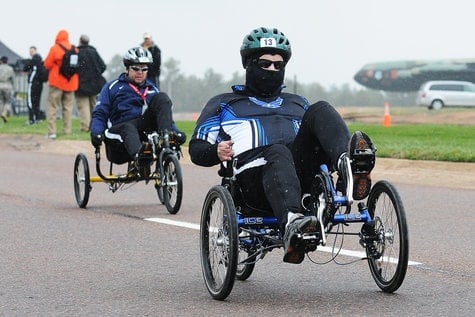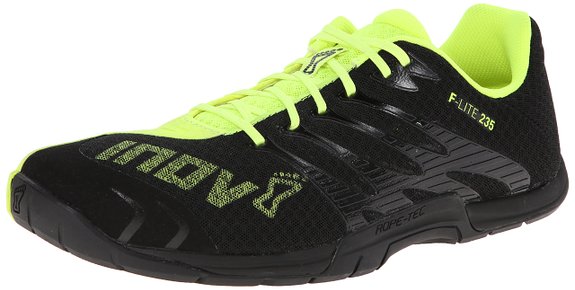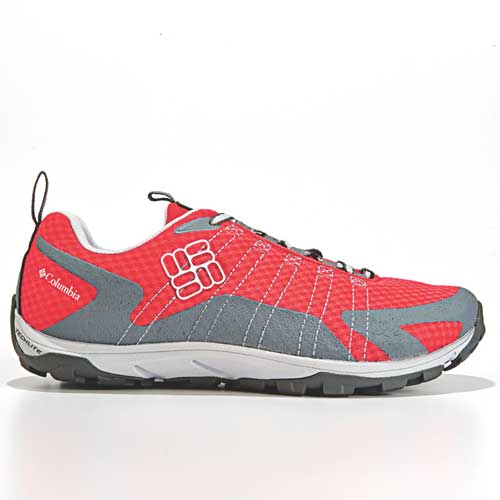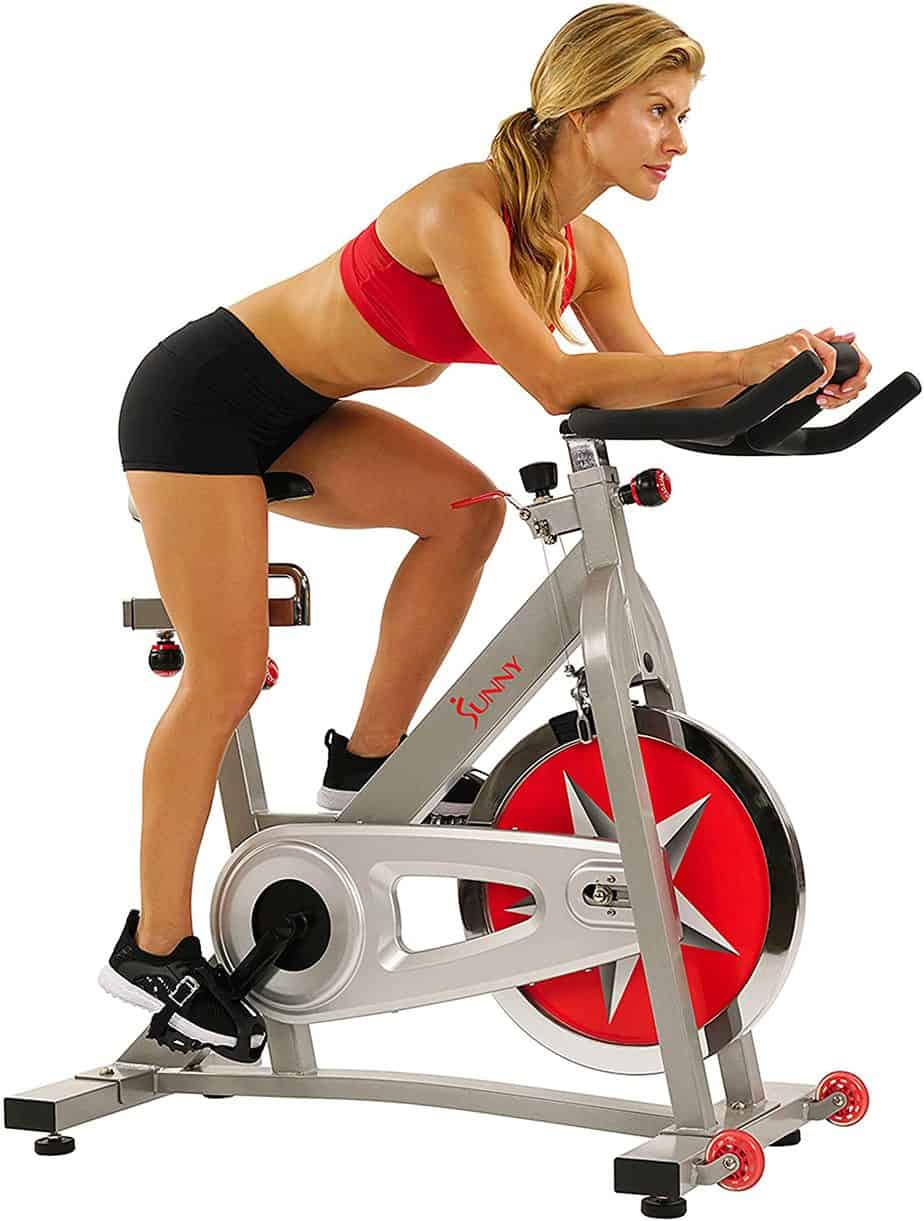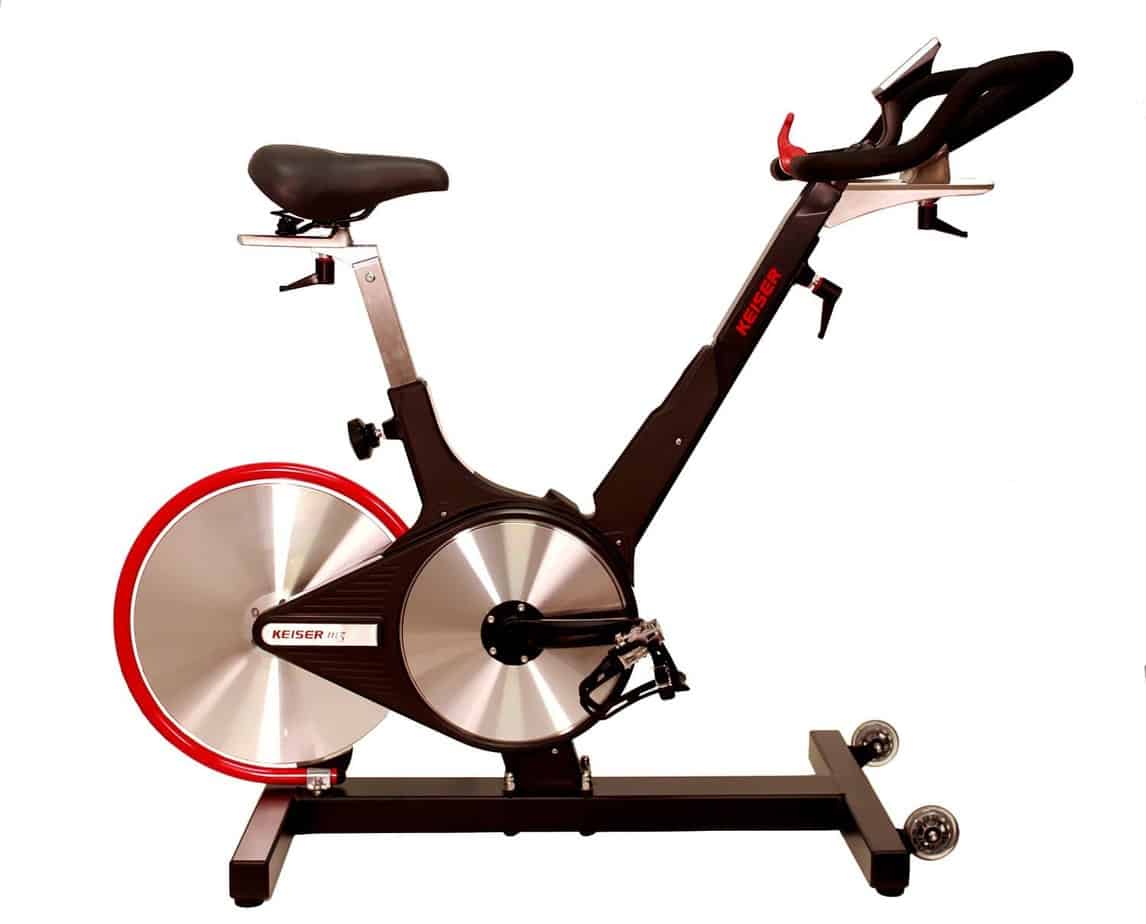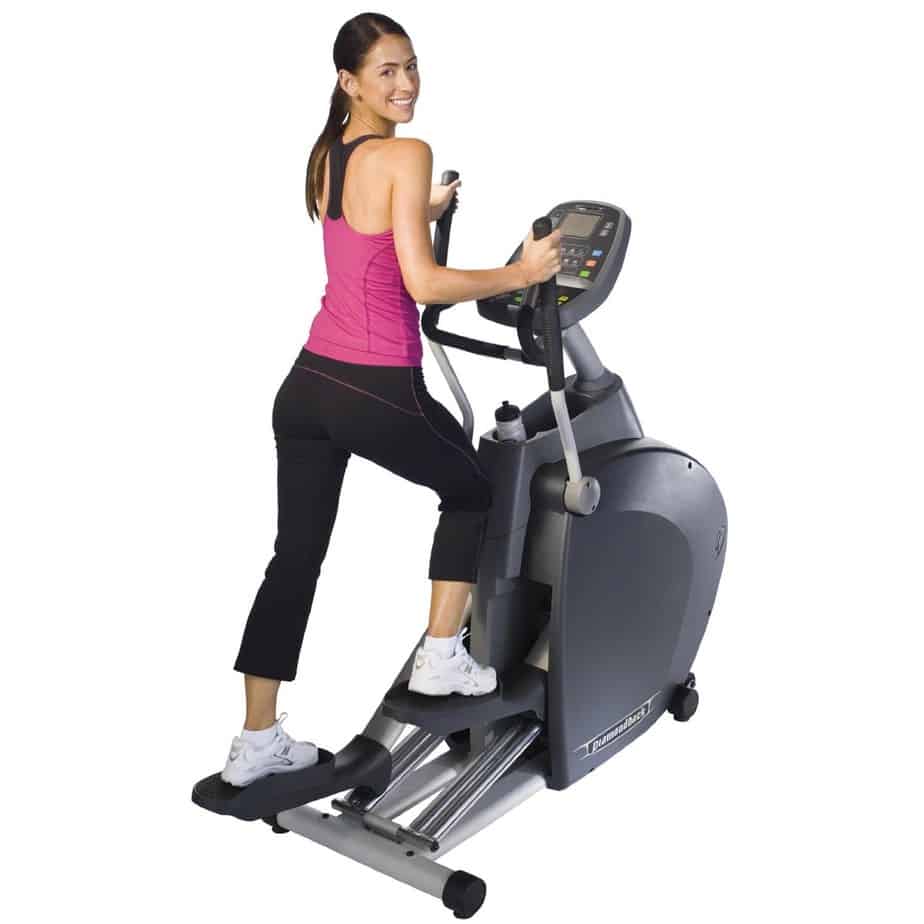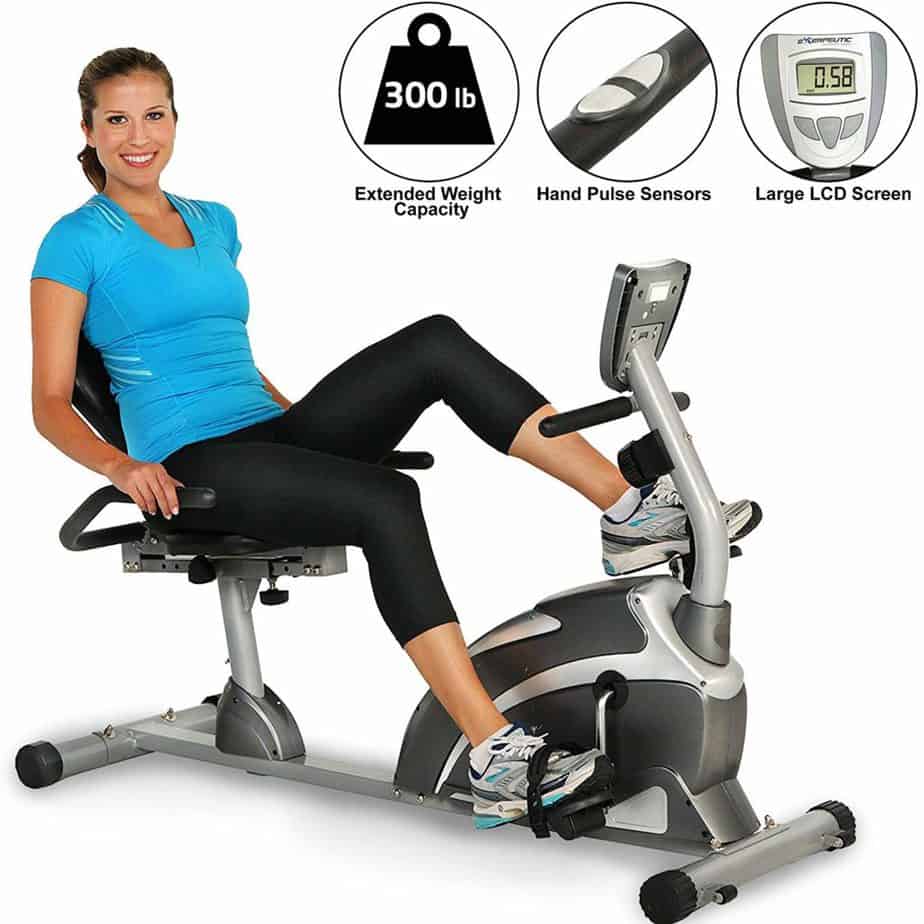The recumbent bike is one piece of cardio machines that could help you burn tons of calories without much hassle. However, the problem has always been knowing and getting the right unit for your home gym.
There are so many of them out there in the market and that has created some degree of confusion and difficulty when it comes to deciding which one to purchase. The good news is that we have taken it upon ourselves to provide a comprehensive recumbent bike buying guide that will ultimately help you find the right machine.
Table of Contents
Benefits of Recumbent Bikes
Low-Impact
Typically, one of the benefits of a recumbent bike is the fact that it offers low-impact workouts. As you may already know that some indoor bikes usually stress the back, ankles, hips, and knees during or after a workout.
But a recumbent bike gives a user a comfortable sitting position to thrust and workout without experiencing all of those negative effects. It could be the best choice for the injured and the elderly for improving physical fitness.
Achieve Perfect Cardio Workout
A recumbent bike provides some level of workout difficulties that are suitable for most users. You will be able to work out with so much intensity that will in turn work and tone the legs and glutes.
Studies show that at least 20 to 30 minutes daily workout improves the user’s overall physical well-being. The use of this machine also reduces the risk of health issues such as heart disease.
Burning Calorie
You can burn a lot of calories with a recumbent bike, however, depending on your fitness and weight level though. Engaging in hourly daily intense workouts burn tons of calories.
Feeling Great After Exercise
The aftermath effect of cardio workouts is feeling great. It has been proven that exercises increase endorphins in the body which eliminate depression and instead ignite the feeling of excitement that eliminates depression.
So, you will be happier when you exercise more often.
Saves Cost and Provides Convenience
Having a recumbent bike at home will certainly save costs and it offers you an opportunity to work out at your own time.
You don’t have to pay for a monthly or yearly gym membership anymore.
You will save memberships and gas costs.
Where Recumbent Bike is Used?
Recumbent bikes are found in gyms and fitness clubs. They are also necessary machines for home gyms. Its popularity is understandable because the use of a recumbent bike is a great way to improve overall physical fitness.
It helps in weight loss, improvement of the heart, and the lungs, and muscle toning.
Recumbent Bike Purchasing Guide
There are numerous recumbent bikes out there including brands and models that possess different features and price tags. We are going to try to look at these recumbent bikes based on their popularity with the help of Amazon customer reviews and ratings.
Best Recumbent Bike- Price Range $100 to $200
Marcy Recumbent Exercise Bike with Resistance ME-709
The Marcy Recumbent Exercise Bike with Resistance ME-709 has many Amazon customer reviews with a very impressive approval rating. This is a very popular recumbent bike that has got great features and affordability. If your budget falls within this range then look no further. Read our full review right here.
Exerpeutic 900XL Extended Capacity Recumbent Bike
The Exerpeutic 900XL Extended Capacity Recumbent Bike has 2,267 Amazon customer reviews with an approval rating of 4.2 out of 5. This is yet another recommendable recumbent bike for those on a budget. Click right here to read our full review.
Velocity Exercise CHB-R2101 Recumbent Exercise Bike
The Velocity Exercise CHB-R2101 Recumbent Exercise Bike has 221 Amazon customer reviews with an approval rating of 3.9 out 5 as at the time of writing this report.
Click right here for of on Amazon
Exerpeutic 1000 High Capacity Magnetic Recumbent Bike with Pulse Wider Seat Extended
The Exerpeutic 1000 High Capacity Magnetic Recumbent Bike with Pulse Wider Seat Extended has 144 Amazon customer reviews with an approval rating of 4.5 out 5 as at the time of writing this post. Click right here to read the full review.
Exerpeutic WORKFIT 1000 Desk Station Folding Exercise Bike
The Exerpeutic WORKFIT 1000 Desk Station Folding Exercise Bike has 356 Amazon customer reviews with an approval rating of 4.3 out 5 as at the time of writing this review.
Best Recumbent Bike- Price Range $300 to $500
Nautilus R614 Recumbent Bike
The Nautilus R614 Recumbent Bike has 160 Amazon customer reviews with an approval rating of 4.1 out 5 as at the time of writing this review. Nautilus is a household name in terms of fitness equipment and you can also read our full review right here.
Schwinn 230 Recumbent Bike
The Schwinn 230 Recumbent Bike has 788 Amazon customer reviews with an approval rating of 4.2 out 5 at the time this article was written. This is a recumbent bike to add to your home gym. Click right here to read the full review.
Schwinn 270 Recumbent Bike
The Schwinn 270 Recumbent Bike has 967 Amazon customer reviews with an approval rating of 4.3 out 5 as at the time this review was written. This is undoubtedly one of the most sought-after recumbent bikes. Click right here to read our review.
Best Recumbent Bike- Price Range $500 to $800
Nautilus R616 Recumbent Bike
The Nautilus R616 Recumbent Bike has 96 Amazon customer reviews with an approval rating of 4 out 5. This is one of the recumbent bikes in this price range that has a good number of reviews from Amazon customers. Click right here to read our full review.
Stamina Elite Total Body Recumbent Exercise Bike
The Stamina Elite Total Body Recumbent Exercise Bike has 102 Amazon customer reviews with an approval rating of 4.4 out 5 as at the time of writing this review. This has strong popularity and with features that will surely make your workout feel like fun.
Best Recumbent Bike- Price Range $1000 and Up
Sole Fitness LCR Light Commercial Recumbent Bike
The Sole Fitness LCR Light Commercial Recumbent Bike is a high-end unit that has 31 Amazon customer reviews with an approval rating of 4 out 5. If you are looking for something more sophisticated then you may want to check out this one. Click right here to read the full review
Nustep TRS 4000 Recumbent Cross Trainer
The Nustep TRS 4000 Recumbent Cross Trainer is more of a hybrid that has a recumbent bike and Elliptical trainer features. This means, unlike a typical recumbent bike you will be able to work the overall body (upper and lower body). It is a well-advanced machine designed to help folks with physical medical conditions. It has 25 Amazon customer reviews with an approval rating of 4 out 5. Click right here to read our full review.
Our Best Pick
We are going to recommend our best low and high budget recumbent bikes.
Exerpeutic 900XL Extended Capacity Recumbent Bike
The Exerpeutic 900XL Extended Capacity Recumbent Bike is a budget-friendly machine that will suit folks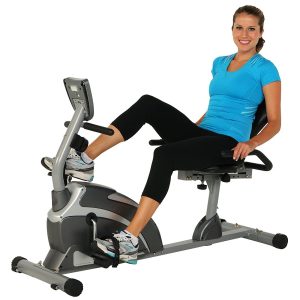
It supports up to 300 pounds of user weight capacity and It has also a wider and comfortable seat designed to offer an exciting workout experience. It has got a magnetic resistance system that offers challenging workouts and makes operation quiet and smooth.
At its price, you also have the opportunity of reading or tracking your workout progress with the integrated monitor that displays your heart rate via the grip contact sensor.
This means you should be able to remain and maintain your target heart rate zone at all times. You also get to see workout data such as time, speed, and calories burned.
Click here to read our full review
Schwinn 270 Recumbent Bike
The Schwinn 270 Recumbent Bike is a very good recumbent bike for anyone. It is very popular with over 900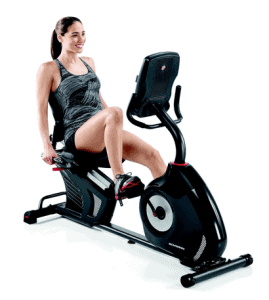
It has Dual track two LCD window system that allows you to observe up to 13 different display feedbacks. It is Schwinn Connect enabled, which allows you to track your goals and export data; this is essential to reaching your fitness goals.
It has 29 programs and 4 user settings. You should be able to experience outstanding intense and challenging workouts because of its 25 levels of resistance aligned with a high inertia perimeter weighted flywheel.
Click right here to read the full review.
However, we discovered that this unit is no longer available at the time of this review. Therefore, you can substitute it for Schwinn 270 Recumbent Bike (MY17) just in case it is still not available. These two recumbent machines share similar features. Click right here to read our full review.
How to determine a Good Recumbent Bike
Amazon Customer Reviews
Use the Amazon customer reviews to know what previous users are saying about any recumbent bike you are interested in. If most of the users speak favorably about the machine that is a green light to go ahead and purchase.
Flywheel
The flywheel is responsible for the consistent, smooth, and quiet operation of a recumbent bike. Therefore, a heavy flywheel is an ideal feature for your machine. This also improves and simulates the operation of an actual bike on the road.
Resistance System
You may want to know the resistance system of any recumbent bike you are interested in because that is another vital aspect that ensures that you get an intense and challenging workout. The higher the resistance levels the better.
Often, the magnetic resistant system is considered to be the best because of its smooth and quiet operation.
Programs
Workout programs help you on achieving your fitness goals and it can even be a lot easier and useful if the recumbent machine.
Ability to Download Workout Data
If a recumbent bike can download workout data that would be a plus and some units do offer this feature such as the one in Schwinn 270 Recumbent Bike that has Schwinn Connect.
Data Tracking
Data tracking essentially helps you to have different useful workout information that could make you stay focused. This information allows you to know the progress of your workout and what you have achieved at a given time. Again, Schwinn 270 Recumbent Bike is a very good example of a unit that has this feature.
Seat Design
The seat design must not be ignored because it is responsible for comfort. If the seat is poorly designed then chances are you will be having a difficult time trying to be comfortable during workouts. A good seat has to be wide, well-cushioned, and of course adjustable.
Weight Capacity
Always know the weight capacity a given recumbent bike supports. Usually, there are mostly 250 to 300 pounds of weight capacity recumbent bikes.
Warranty
A good warranty is a necessity. If a recumbent bike has a good warranty on the frame, parts, and labor then that shows that the manufacturer has confidence in the quality of the unit.
Other Necessary Considerations
Workout Outfit
It is important to improve the quality of the workout by putting on the right clothes. Fitted clothes are ideal for working out on a recumbent bike as oppose to non-fitted clothes that could get you distracted or worst still injured. Try fitted shorts and shirts.
Good Gym Shoes
Using the best gym shoes cannot be overemphasized because this is also responsible for your safety and comfort. Check out our review of the best gym shoes for men and women.
Recumbent Bike Maintenance
Do not forget to do little things like dusting or cleaning your unit when you are done working out. Such action could prevent unnecessary breakdowns and allow the unit to last longer. Dust and moisture are not good for the recumbent bike.
Conclusion
The best recumbent bikes for home use are covered in this post. We have tried to come up with the best through our thorough reviews and Amazon customer reviews to further cement our opinion.
Recumbent bikes are great for everyone and most especially those that have a physical health condition and the elderly. You can go as intense as you want with your workout and challenge yourself even more and still get all the positive effects of burning calories without the stress to the back, knees, ankles, and other joints that are usually experienced with some other ways of doing cardio.
I am a health and fitness enthusiast. I take anything and everything that improves my health seriously. Hence, I try to share my knowledge in helping people that wish to up their health status to one that enables them to live strong with confidence.
We also review health and fitness equipment such as treadmills, elliptical trainers, spin bikes. recumbent bikes and many more.
